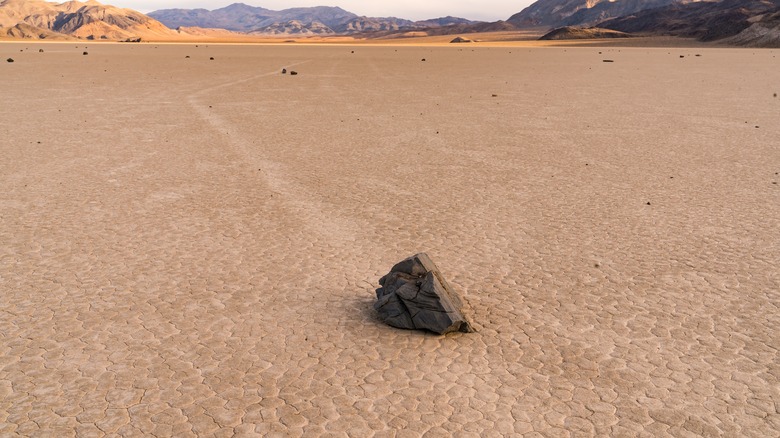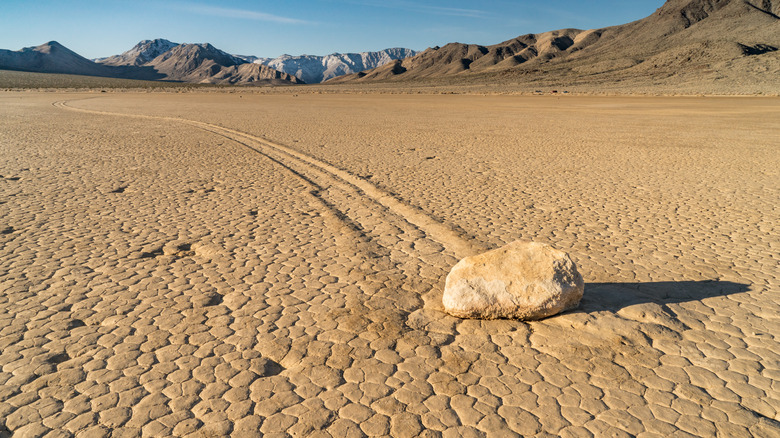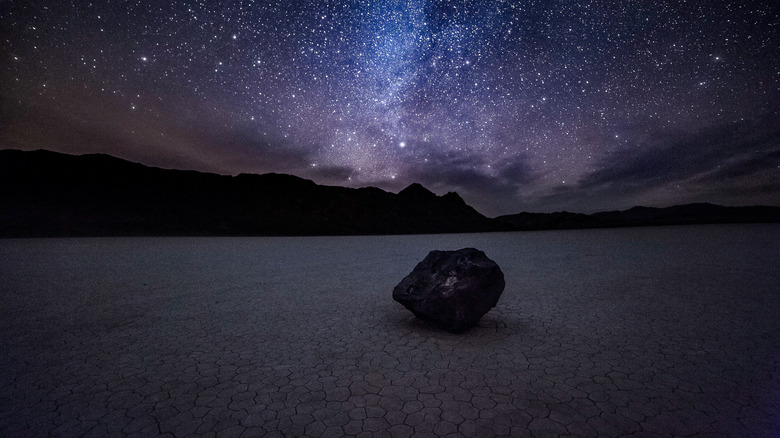How Scientists Solved The Sailing Stones Of Death Valley
The world is absolutely jam-packed with mysterious phenomena, some of which have an obvious scientific explanation, others that baffle and confuse onlookers. Of course, everything has a proper reasoning, and with a proper application of the scientific method, that reasoning can be uncovered, eventually. One of the longest-running natural mysteries in the United States, though, was that of the Sailing Stones of Death Valley.
In Death Valley National Park, located on the sizzling border between California and Nevada, there's a flat stretch of parched land nicknamed "Racetrack Playa." This locale got its name because many of the large, heavy rocks that dot its surface seem to glide along the ground while nobody is looking, leaving distinctive trails behind. These "Sailing Stones" were a topic of scientific inquiry as far back as the early 1900s, with researchers utterly baffled at what was moving these heavy lumps of solid stone. It wasn't until the year 2014 that an answer was finally discovered.
The magic of the Sailing Stones
From a casual glance, the heavy rocks that line Racetrack Playa shouldn't be capable of horizontal movement. It's completely level ground, after all — the rocks may initially fall from the surrounding cliff faces, but once they're on solid ground, they shouldn't be going anywhere, at least not without something to nudge them along. Turns out, though, something was nudging them along; it just wasn't something we could see with the naked eye.
In 2014, using a combination of time-lapse cameras and small sensors attached to the rocks themselves, researchers were able to not only get an actual view of their movement for the first time in history but also able to determine what was moving them: ice.
The thing about desert climates is that, while they are blisteringly hot during the day, at night, the flat elevation and lack of coverage cause the climate to flip to bitter cold. Very rarely, during winter, a small amount of rain manages to fall on Death Valley and, by extension, onto the rocks. This rain forms a very slight sheet of ice on the ground. When the sun rises, and the temperature cranks back up, the ice melts, turning the surrounding ground muddy. But a small raft of ice remains under the rocks for a little longer. At that point, all it takes is a light breeze, and the rocks start sliding.
The trick, revealed
The reason nobody was ever able to see the rocks moving is that they were moving so slowly, it was barely even perceptible. With a slight breeze and an icy raft, the rocks would only slide around five to 15 feet a minute and only for around 15 minutes at a time. By the time an onlooker realizes the rocks have moved slightly, they've already stopped. Plus, if all the rocks on the ground are moving at once, you might dismiss the movement as a trick of the desert sun.
While the mystery of the Sailing Stones has been solved, it remains one of Death Valley's most famous attractions to this day. Not only is it nifty to look at it, but it's an implication of an absolutely impeccable happenstance of nature, one that could never have occurred unless every single relevant element just happened to be in completely perfect alignment.


